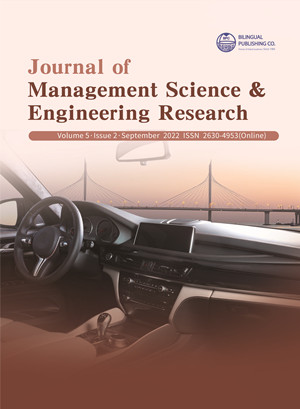-
4783
-
3722
-
2241
-
1220
-
1080
An Ergonomics Study and Rapid Upper Limb Assessments (RULA) for a Car Interior to Support Limb Disabled Drivers
DOI:
https://doi.org/10.30564/jmser.v5i2.4714Abstract
The demanding market shows that the need for the disabled vehicles have been increasing over the recent years. However, these factory setting cars are pricey, and its buy-sell process is time-consuming. These cars also are not meant as a universal design or inclusion design type of car, so that when it is designed for the disabled, it can be beneficial for all. With the motivation to include limbs disabled drivers in designing a universally designed car, this study aims to determine the preferred ergonomics interior of the car which can improve features needed to meet the mobility of impaired individuals in most scenarios. 5 simulations were carried out to simulate these conditions using the RULA analysis, in order to simulate the ergonomics impact on the manikin. In the final analysis, the simulations showed a virtuous score, which was between 1 and 2 for the newly redesigned interior, compared to the score of 3 to 6 for current cars. Another verification made, post questionnaire delineates positive responses upon the redesigned parts scoring 70%~90% level of ergonomics rated. Therefore, this research has set forth the necessity of redesigning a car interior and improved its ergonomic features extensively, specifically for lower limb and combined limb disabled drivers.
Keywords:
Limbs disabled, Redesign, Inclusive design, Ergonomics, RULAReferences
[1] Keates, S., Clarkson, P.J.J., 2003. Countering design exclusion: bridging the gap between usability and accessibility. Universal Access in the Information Society. 2(3), 215-225.
[2] Jokisuu, E., Langdon, P., Clarkson, P.J., 2011. Modelling cognitive impairment to improve universal access. In International Conference on Universal Access in Human-Computer Interaction. Springer, Berlin, Heidelberg. pp. 42-50.
[3] Carlsson, G., Iwarsson, S., Stahl, A., 2002. The personal component of accessibility at group level: exploring the complexity of functional capacity. Scandinavian Journal of Occupational Therapy. 9(3), 100- 108.
[4] Moreira, F., Almendra, R., 2007. Inclusive design: a new approach to design project. In A portrait of stateof-the-art research at the Technical University of Lisbon. Springer, Dordrecht. pp. 605-621.
[5] Chimbuya, A., 2009. Barriers to adoption Inclusive Design. 31st Annual School of Industrial Design Seminar.
[6] Clarkson, P.J., Dong, H., Keates, S., 2003. Visualising design exclusion. International Conference on Engineering Design. pp. 1-10.
[7] Kirisci, P.T., Klein, P., Modzelewski, M., et al., 2011. Supporting inclusive design of user interfaces with a virtual user model. In International Conference on Universal Access in Human-Computer Interaction. Springer, Berlin, Heidelberg. pp,69-78.
[8] Bayless, S. H., Davidson, S., 2019. Driverless cars and accessibility: designing the future of transportation for people with disabilities.
[9] Carroll, P., Witten, K., Duff, C., 2021. ‘How can we make it work for you?’ Enabling sporting assemblages for disabled young people. Social Science & Medicine. 288.
[10] Berent, P.A., Fujiyama, T., Yoshida, N., 2021. Evaluating delivery of cycling activity and training programmes for disabled people in the UK. IATSS Research. 45(3), 371-381.
[11] Schneider, L.W., Manary, M.A., Orton, N.R., et al., 2016. Wheelchair occupant studies: final report.
[12] National Highway Traffic Safety Administration, 2015. Adapting Motor Vehicles For People With Disabilities.
[13] Field, M., Jette, A., 2007. The future of disability in America. Washington: The National Academies Press.
[14] Suliano, S.B., Ahmad, S.A., As’arry, A., et al., 2020. Limbs disabled needs for an ergonomics assistive technologies and car modification. Advances in Material Sciences and Engineering. pp. 67-73.
[15] Suliano, S.B., Ahmad, S.A., As’arry, A., et al., 2020. Review on ergonomics application on car modification for limbs disabled drivers. Advances in Manufacturing Engineering. pp. 575-589.
[16] Suliano, S.B., Ahmad, S.A., As’arry, A., et al., 2020. TRIZ application: An innovative approach in redesigning an ergonomics car interior for limbs disabled. International Conference on Mechanical, Manufacturing and Plant Engineering.
[17] Karmegam, K., Sapuan, S.M., Ismail, N., et al., 2011. Anthropometric study among adults of different ethnicity in Malaysia. International Journal of Physical Sciences. 6(4), 777-788.
[18] Biswas, A., Sen, S., Ray, K., 2019. Reliability assessment of pre -post test questionnaire on the impact of a daylong clinical pharmacology workshop among medical professionals. Asian J. Med. Sci. 10(6), 93-97.




 Salami Bahariah Suliano
Salami Bahariah Suliano





